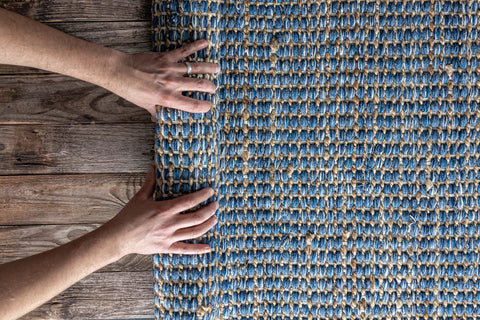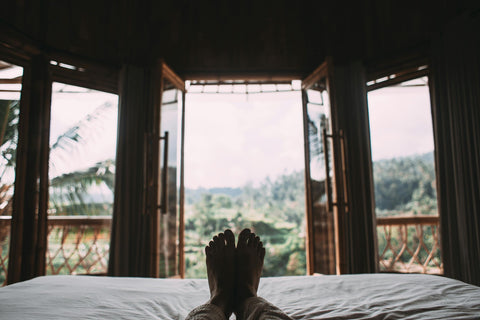There exists a beauty that doesn't shout, rush, or try to impress with the noise of the latest trend: it's the slow beauty that knows how to make you breathe. Slow design is not just an aesthetic philosophy; it's an invitation to slow down, to inhabit each object with awareness, to listen to what the space whispers when it's not saturated with excess.
Have you ever wondered how long it takes for a chair to tell a story? Or how much silence is needed to capture the soul of a natural fabric dyed with earth-respecting pigments? In a world that pushes towards rapid production and fast consumption, slow interior design appears almost revolutionary: choosing authenticity over the ephemeral, the local over the global, quality over quantity.
Slow Design Meaning: Origins and Evolution

The slow design movement emerged in the early 2000s, inspired by the broader slow movement philosophy that began in Italy in the 1980s with slow food. The concept quickly expanded beyond food, finding fertile ground in the world of design and architecture.
In an era where fast design dictates aggressive production rules and short product life cycles, slow design offers a critical and constructive response: instead of designing for obsolescence, we design for permanence, for emotional connection, for sensory and environmental well-being.
This approach naturally intertwines with slow living, a daily vision that prioritizes presence, simplicity, and the quality of experiences over their quantity. Designing, thus, becomes an act that reflects a lifestyle: more aware, slower, more human.
Initially developed in academic circles and among small independent studios, the slow design movement has gradually won the hearts of established designers and companies attentive to ethical production, especially in artisanal and territorial contexts like Brazil, where the relationship between humans, nature, and objects has deeply ritual roots.
Slow Design Principles: 6 Essential Pillars

Adopting slow design principles means changing perspective: it's not just about choosing beautiful or durable objects, but about entering into a deep relationship with what surrounds you, rediscovering the value of time, care, and intention. Here are the fundamental concepts on which this design philosophy is based:
1. Holistic Sustainability
Not only respect for the environment but also for people, traditions, and cultures that bring objects to life. Every element in a slow space should result from processes that protect biodiversity, reduce waste, and enhance human labor. Sustainability here is both ecological and emotional.
2. Authenticity and Local Roots
Every object tells a story: that of the place it comes from, the hands that shaped it, the history it carries. Slow design encourages rediscovering artisanal craftsmanship, local materials, and traditional techniques, often at risk of extinction. In doing so, a deep bond is built between you and what you inhabit.
3. Awareness in Processes
Knowing the "behind the scenes" of what you choose means making more ethical and sensible decisions. Slow design promotes transparency in the production chain, including quality and sustainability certifications – for example, FSC – and invites you to reflect not only on the finished product but also on the journey that brought it to you.
4. Sensory and Relational Well-being
Good slow design is not limited to functionality: it must make you feel good. Attention to natural light, tactile materials, colors that evoke calm and depth, is an integral part of this philosophy. But well-being also concerns relationships: between you and the space, between objects, your daily life, and the people who inhabit it. In this, slow interior design becomes a concrete form of slow living.
5. Slowness as a Creative Method
In a world where everything must be "ready for yesterday," slow design teaches you that time is a precious design ingredient. The act of designing – like living – can (and should) be meditated, open to change, attentive to the evolution of needs over time. This is why slow design is the inevitable response to counter the "fast" drift that has taken over the fashion world, and beyond.
6. Emotional Durability
It's not enough for an object to be made to last materially: it must also know how to stay with you emotionally. The pieces you choose with care, that you know, that you love, become part of your story. And precisely for this reason, they resist trends and relocations, crossing the seasons of your life.
Famous Examples of Slow Design
Among the pioneers of slow design, we cannot fail to mention Alastair Fuad-Luke, author of fundamental texts and tireless promoter of a more human design. But many designers, even without explicitly labeling their work as "slow," have created works perfectly in line with slow design principles.
Brazilian Lina Bo Bardi, for example, managed to translate the cultural richness of Brazil into objects and spaces that combine functionality, craftsmanship, and poeticism. Her solid wood seats, often made by local carpenters, are a manifesto of happy slowness.
In more recent times, designers like Sergio Rodrigues or the Campana brothers have proposed an aesthetic that celebrates imperfection, living matter, memory, often collaborating with artisan communities. A table made from reclaimed Amazonian wood, a chair that weaves recycled plastics and indigenous weaving techniques: each piece tells a story worth listening to.
Practical Tips for Embracing Slow Interior Design in Your Spaces

To truly embrace slow interior design, there's no need to radically change everything around you — what matters most is learning to observe with new eyes.
-
Start by asking yourself where your objects come from: if you know who made them, the material they’re crafted from, or if they speak to you in some way, you’re already walking the path of slow design.
-
Choose natural, untreated materials — those that age gracefully and tell the story of passing time: a raw wood table, a hand-molded ceramic lamp, or a handwoven rug made from natural textile fibers. These pieces are not only sustainable but rich in texture, soul, and heritage.
-
Take your time when choosing what surrounds you: instead of buying impulsively, explore. You might find a one-of-a-kind piece at a local market, or perhaps commission a custom creation from a regional artisan. This thoughtful pace aligns perfectly with the values of the slow design movement.
-
Integrate elements that stimulate the senses: let natural light change the atmosphere throughout the day, include a scent that evokes memories, or highlight the raw feel of a textured surface. In this way, slow living interior design is not just about what you see — it’s about what you feel, sense, and remember.
-
It's through this attention to rhythm, sensorial presence, and meaningful choices that living and dwelling converge: slow interior designs and slow living naturally become two sides of the same experience.
Conclusion
Embracing slow design is a way to reconnect with time, with materials, and with the silent stories that every object can tell. It’s a return to essence, to the quality of things made with care. In a world that races, the real revolution might just be to stop — and truly live, slowly and mindfully.
Let yourself be inspired by our collections of pieces crafted by local Brazilian artisans, designers, and artists. Every item in the Tropicalistic selection is a testament to the heart of slow design principles — made with intention, rooted in place, and rich in story.




Comments (0)
There are no comments for this article. Be the first one to leave a message!